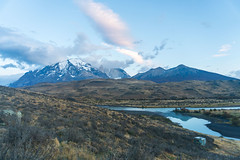“All [playgrounds] are temporary worlds within the ordinary world, dedicated to the performance of an act apart.”– Johan Huizinga
Given the importance of play to a child’s development, landscape architects have the potential to influence the development of society.
In contemporary society play is often seen as the exclusive domain of children, or at best a sign of immaturity or frivolity in adults. For example, when we refer to “child’s play,” we refer to something that is easy or simple, while “just playing around” implies a lack of seriousness or direction. In contrast, Huizinga’s observation reveals the complexity of play as “an act apart” that involves the temporary suspension of ordinary life for an imaginary life – one in which ideas and activities are developed, tested and performed within a safe environment. In 1974, environmental psychologists Hayward, Rothenburg and Beasley noted that:
“… the opportunity to play enhances one’s ability to initiate independent activity – activity which is crucial to the exploration and construction of one’s autonomy, identity and self-image as a constructive force.”
When seen from this perspective, play is an essential part of the formation of identity: a process that is common to both children and adults throughout their lives. In fact, playspace designers may exert considerable influence on the development of society, so the task is complex and deserves careful consideration.
Overall, playspaces are essential in that they provide opportunities for children to test and develop a wide range of skills in a safe, child-directed environment. In an increasingly technological society, they also have an important role to play in exposing children to outdoors settings and the natural processes that occur within them. While manufactured equipment provides a broad range of physical and social experiences and will certainly remain popular components of contemporary playspace design, it is also vital for designers to consider how unstructured and open-ended imaginative play can be inserted into playgrounds.
Here are the examples of play design which indicate an exciting expansion of the traditional playground to incorporate social and environmental functions while connecting with broader open space networks.














